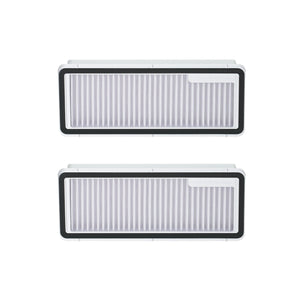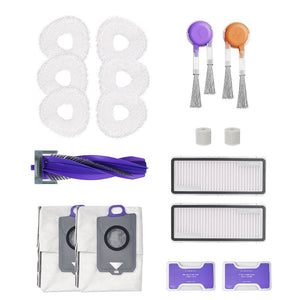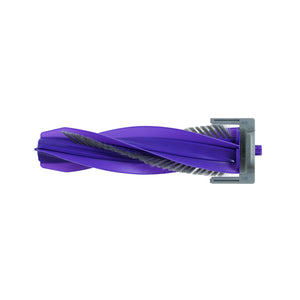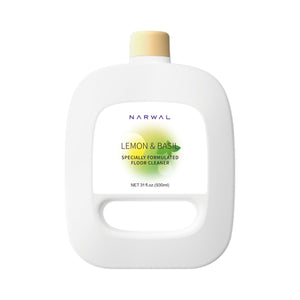Robot vacuums have become a popular choice for efficient home cleaning. They offer convenience and automation, but when it comes to tight spaces—such as corners, under furniture, and narrow hallways—the real challenge lies in their performance.
In this article, we’ll explore how robot vacuums handle these confined areas, looking at key features like cleaning efficiency, navigation technology, and more.
The Challenge of Tight Spaces
While robot vacuums have proven themselves in many areas, they face specific challenges in smaller, more confined spaces. Tight areas, such as small apartments, narrow hallways, and spaces under furniture, often make traditional vacuuming a difficult task. Traditional vacuums are typically too large to reach under sofas or between tight corners. These spaces require a different type of cleaning solution.
Robot vacuums, with their small size and clever design, are better suited for tight spaces. How effective are they in these tight spaces? This article will explore how robot vacuums tackle these challenges and what features make them particularly suited for small, confined areas.
Basic Features of Robot Vacuums
Before diving into the performance in tight spaces, let’s take a look at the key features of robot vacuums that enable them to clean efficiently.
Automated Cleaning
Robot vacuums operate on a series of sensors and intelligent path-planning systems. These sensors allow the vacuum to navigate the room while avoiding obstacles. The system maps out the environment and ensures the vacuum covers all areas, cleaning every inch of the floor.
These vacuums are built to clean different types of floors effectively. Whether it's hardwood, tile, or carpet, they can adapt by adjusting their suction power and cleaning mode accordingly. In tight spaces, their ability to switch modes based on the surface type ensures that every corner is thoroughly cleaned.
Compact Design and Size
One of the biggest advantages of robot vacuums is their compact and low-profile design. Their compact design allows them to easily maneuver in cramped areas. They can slip under furniture, such as sofas, beds, and coffee tables, reaching places that traditional vacuum cleaners cannot.
The shape of the vacuum also plays a crucial role. Most robot vacuums are round or D-shaped, allowing them to turn and navigate easily in corners. This design makes it possible to clean along walls, around furniture, and in other hard-to-reach spots that often get overlooked.
Now that we understand the basic features, let’s explore how robot vacuums perform in tight spaces.
Cleaning Efficiency
Cleaning efficiency is one of the most important factors when evaluating a robot vacuum’s performance in tight spaces. In tight spaces where regular vacuums struggle, robot vacuums excel at getting the job done efficiently.
Effective Cleaning in Confined Areas
Robot vacuums are highly efficient in cleaning tight spaces. In small apartments or narrow hallways, where traditional vacuums struggle, robots can easily maneuver around obstacles and reach every corner. Their compact size allows them to access areas under furniture, where dust and debris often accumulate.
Even in tight corners, robot vacuums excel. With advanced mapping and navigation, these vacuums can steer clear of obstacles while providing an effective clean. Some models even offer specialized cleaning modes that allow them to focus on specific spots, such as walls or edges, that tend to gather dust.
Edge and Corner Cleaning
One of the common struggles in tight spaces is cleaning the edges and corners. Robot vacuums have edge-cleaning modes that enable them to focus on these hard-to-reach areas. These vacuums use side brushes or special rotating brushes that extend beyond the body of the vacuum, allowing them to clean along walls and in corners effectively.
Models with advanced sensors can detect where dust tends to build up and direct the vacuum to those areas. This ensures that no corner is left untouched, even in smaller, more crowded rooms.
Intelligent Navigation and Obstacle Avoidance
Cleaning efficiently in tight spaces isn’t just about suction power or compact design—it also relies heavily on the vacuum's ability to navigate complex environments. Modern robot vacuums use intelligent navigation systems and obstacle-avoidance technologies to tackle these challenges.
Navigation Technology
Advanced robot vacuums use cutting-edge navigation systems, such as LIDAR (Light Detection and Ranging), infrared sensors, and visual recognition, to map out the cleaning environment. These systems enable the vacuum to understand its environment and chart the most efficient path for cleaning.
LIDAR is particularly effective in tight spaces, as it can create a 360-degree map of the room, even in low-light conditions. This ensures the vacuum doesn’t miss any spots, even in dark corners or behind furniture.
Obstacle Avoidance
A critical feature for cleaning in tight spaces is the vacuum's ability to avoid obstacles. Top-tier robot vacuums feature sophisticated sensors that allow them to move smoothly around obstacles like furniture and walls. These sensors ensure the vacuum avoids getting trapped or colliding with objects, which is crucial in tight spaces where every inch counts.
In narrow hallways or crowded rooms, the vacuum’s ability to detect and avoid obstacles ensures it keeps moving efficiently without disruption. This system not only prevents damage to the furniture but also guarantees uninterrupted cleaning.
Noise Level
While navigation and cleaning efficiency are key, noise levels can also impact the usability of robot vacuums, especially in smaller homes. In tight spaces, where sound can be amplified, a quieter vacuum is often preferable.
Impact of Noise in Small Spaces
In confined spaces, noise can be amplified, which may disrupt the household. Since robot vacuums operate autonomously, it's essential to consider their noise level, especially in smaller rooms where the sound may bounce off walls and seem louder.
Many modern robot vacuums are designed with noise reduction in mind. They are designed with quiet motors and noise-reducing materials, making them perfect for smaller spaces where noise might be an issue.
Reducing Noise
Manufacturers have developed several methods to reduce noise levels. Some models offer “quiet” or “sleep” modes that reduce suction power slightly while maintaining efficient cleaning. This is particularly helpful in spaces where the vacuum runs during the night or in homes with babies or pets.
Battery Life and Smart Charging
A robot vacuum's ability to clean tight spaces also depends on its battery life and charging capabilities. In smaller areas, efficient battery management is crucial to ensure uninterrupted cleaning.
Battery Duration in Tight Spaces
Battery life is another important factor for robot vacuums, particularly when cleaning smaller spaces. Although smaller rooms typically don’t require extended cleaning times, it’s essential that the vacuum can complete its task without needing a recharge.
Robot vacuums typically run for 60 to 120 minutes, depending on the model and cleaning settings. For small spaces, this should be sufficient to clean the entire area, though larger rooms may require the vacuum to return to its charging station mid-clean.
Smart Charging and Auto Return
Many modern robot vacuums feature smart charging capabilities. When the vacuum's battery is low, it will autonomously return to its charging station to power up, then continue cleaning. This ensures that the vacuum is always ready to finish the job, even in confined spaces where power consumption can be higher due to increased maneuvering.
Selecting the Best Robot Vacuum for Confined Spaces
When selecting a robot vacuum for small or tight spaces, it’s essential to consider a few key factors:
-
Cleaning Area and Runtime: If you have a small apartment, a vacuum with a short runtime might suffice. If you're dealing with long spaces like hallways, choosing a model with extended battery life is essential.
-
Size and Shape: Smaller, more compact models work best for cramped rooms. Choose vacuums that are slim and capable of reaching under low furniture.
-
Advanced Navigation: Choose a robot vacuum with advanced navigation and obstacle avoidance features, especially if you have furniture or other obstacles in your small spaces.
By considering these factors, you can find a robot vacuum that is well-suited to your home’s unique challenges.
Narwal Freo Z Ultra – Ideal for Tight Spaces
For tight spaces where traditional vacuums can’t reach, the Narwal Freo Z Ultra is the perfect solution. With its compact size, powerful suction, and intelligent navigation, this robot vacuum ensures a thorough clean without the hassle.
[cta:narwal-freo-z-ultra-robot-vacuum-mop]
Compact and Efficient Design
With a size of 355 x 350 x 109.6 mm and weighing just 4.5 kg, the Freo Z Ultra is designed to fit into narrow spaces, easily gliding under furniture and around tight corners. Despite its small footprint, it offers impressive 12000Pa suction power, making it highly effective at removing dust, dirt, and pet hair from all surfaces.
Advanced Navigation and Obstacle Avoidance
The Freo Z Ultra features dual RGB cameras and AI-powered sensors, which help it map your environment in real time. This ensures it avoids obstacles, like furniture legs and walls, with ease. The robot’s AI system can detect over 120 objects, allowing it to navigate around tight spaces without getting stuck.
Key Specifications
-
Dimensions: 355 x 350 x 109.6 mm
-
Weight: 4.5 kg
-
Battery: ≥5000mAh
-
Rated Power: 65W
-
Base Station Weight: 12.3 kg
In tight spaces, where precision matters, the Narwal Freo Z Ultra combines cutting-edge technology with practical design to ensure your cleaning tasks are handled efficiently.
Conclusion
Robot vacuums are the perfect solution for cleaning tight spaces. Their compact design, smart navigation, and powerful suction make them ideal for hard-to-reach areas under furniture, corners, and narrow rooms.
With the right features, like those in the Narwal Freo Z Ultra, they can efficiently tackle even the most confined spaces. Switch to a robot vacuum now for easier, more efficient cleaning with less effort!





















































